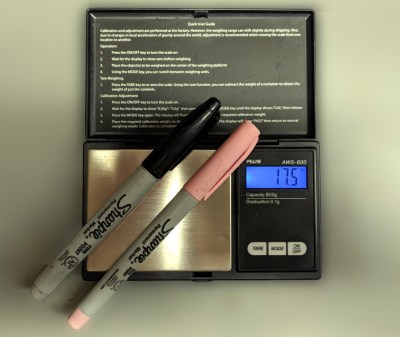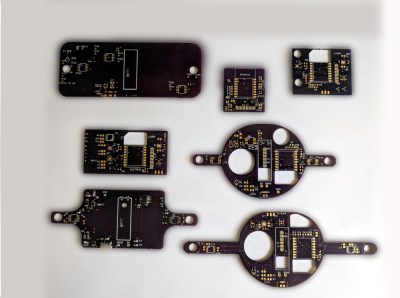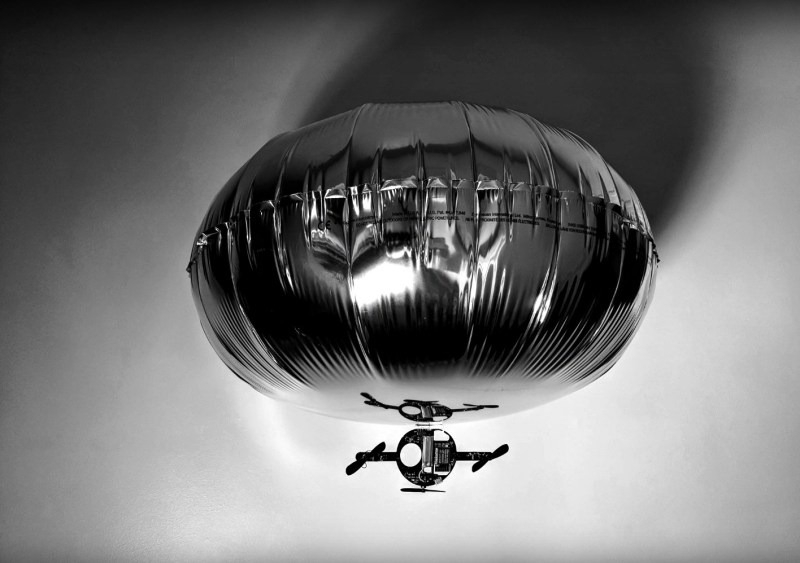Building things that fly is hard. The constraints on small, battery powered, radio-operated gear already presents a challenge, but adding weight, balance, and aerodynamic constraints takes it to a whole new level. Sophi Kravitz rises to the occasion and discusses each challenge of building a blimp from start to finish in her presentation at the 2018 Hackaday Belgrade conference.
One of the pleasures of writing for Hackaday comes through the incredible array of talent and experience to be found among our colleagues. We all do our own work, but one is humbled by that which flows from the benches of those one works alongside. Just such a project is the Remote Control Mini Blimp from our colleague Sophi Kravitz. It’s a game involving an obstacle course and a set of remote-controlled blimps. The challenges in such an endeavour have been pushing the limits of what is possible with off-the-shelf components.
Lighter Than Air is a Heavy Burden

So why might what is essentially a toy aircraft strain the boundaries of possibility? Calling it a toy doesn’t make flight any easier to achieve. In this case, the small size makes it more difficult.
Sophie’s game uses 1 metre hula-hoops as obstacles, because they are of a size that can easily be taken as luggage on a commercial aircraft. In turn they place a size limit upon what can be flown through them, and since in the case of a blimp the size dictates the capacity of gas it can use for buoyancy, it also dictates the weight restriction on her design. With only 16 grammes of lift from her helium envelope, her machine needs to have partaken of a particularly strict diet simply to take to the air. Everything, fuselage, electronics, power supply, propellers and motors, has to weigh less than that figure, and achieving that is no easy task.
Power Management
Since the weight of the craft depends so much on its components, she treated us to a run-down of her choices in the schematic, the pitfalls that some of them spawned, and the steps she took to overcome them. Unexpectedly she includes the charging circuitry on-board, due to an entirely understandable dislike of JST connectors. This choice however created an unforseen problem, in that the rest of the electronics would rob the energy intended to charge her cell rather than letting the cell charge. She solved this with an inverter to pull the enable lines for the craft low while charging, though at the expense of another chip.
Her first power supply used an LDO regulator, but was replaced with a buck-boost switching converter when she traced some intermittent communication problems to a low supply voltage. It seems that the “low” for the “L” in “LDO”, just wasn’t low enough, and the resulting power dips were just too much for her ESP8266 to handle. Similarly her initial motor controller choice proved to be unsuitable for the draw demanded by her motors, and was replaced with a better choice.
Selecting Motors
We’re used to selecting brushless motors and their propellers for quadcopters, but the tiny 4mm DC motors in Sophi’s build lacked the rich datasheets you might normally expect. Not wishing to buy a sample of every motor under the sun, she bought a small selection for evaluation. Unlike their quadcopter cousins they came with propellers but without associated data, being designed as fan motors rather than lift motors. Final motor selection was therefore a mixture of real-world evaluation with a mild stab in the dark.

So after a series of versions, she had a PCB with left and right motors on two arms and a lift motor pointing downwards, which she suspended beneath the helium bag. Her controllers are simple enough 3D-printed joystick housings, with another ESP8266 within. The blimp ESP8266 forms a wireless network to which the controller connects.
The Hackaday community first saw something of this project when it was at a much earlier stage, as Sophi presented it at the spring’s Dublin Unconference. She readily admits that there is some more work to be done as her video of it flying through a hoop was the first success of many takes, but it has been extremely interesting to see it having made real progress. She gives the tantalising promise that she might demonstrate it at a future conference, a prospect for which we can hardly wait!
Don’t miss the Hackaday Superconference this November. Focused on hardware creation, it’s three days filled with talks like this one, plus workshops, badge hacking, community and more.
















“Continue reading →”
It’s not a real hack unless she uses an Air Swimmer :-)
We had a great time running a challenge for fellow students at the University of Surrey (SurreyEARS) a few years ago asking similar lines. We gave them large balloons (not Mylar as some challenges involved popping!), micro quadcopter parts and an ESP8266 with a slim h-bridge backpack. We set up NodeRED instances for each team which talked to the blimps via mqtt, and then suggested an OSC client phone app for control, bring bridged in NodeRED. We had all sorts of entries, including some Java control clients from the computer science students! The balloons worked well except the latex leeched out the helium over a few hours, so fresh balloons were needed for the competition.
Uni marketing video (beware cheese): https://youtu.be/SGXM8YXj1zc
Using hydrogen instead of helium might give that extra bit of lift (just shy of 100mg per litre).
Yes, a bit tongue-in-cheek ;-P
Although (ah, memories) when (and where) I was a kid, the stuff in those balloons *was* flammable. I remember one guy losing a bet (and the other most of the hair on his face and forehead) over this question.
I can’t imagine why hydrogen isn’t used more often. It has more lift and the H2 molecule doesn’t leak through rubber and plastic bags or balloons. If by some far fetched incident it does catch fire, the brief bit of flame goes up, not out or spilling like gasoline. I have wondered why expensive and hard to contain helium is wasted on stratospheric balloon projects.
I’m right there with you. Hasn’t it also been established that the Hindenburg caught fire because of a flammable paint/coating? Obviously the hydrogen also burned once the fire started, but it wasn’t the cause of the fire. And, like you said, if a little craft like this DOES catch fire, it’s just a small “foof!” that’s unlikely to ignite any modern building materials.
weather balloons use hydrogen, always have
love hydrogen as a lifting gas but it can leak through just about anything. H2 molecules are not that stable, they brake apart and come back together all the time. and a single hydrogen atom is so small it can infiltrate sold metal (this is part of what causes hydrogen embrittlement)
If you look up the explosive range of hydrogen, you might find your answer. Also, these blimps are only down indoors as the wind would otherwise overpower them completely.
Can you imagine how the risk assessment would go?
Cool project. I did not understand how she is going to control up/down though. I think real blimps pump outside air in/out in order to control buoyancy but in her case she only has a balloon with a fixed amount of helium inside. I suppose she could tilt the propellers up/down but that would require another motor controlling the angle of the propellers. Am I missing something?
> I did not understand how she is going to control up/down […]
Looking at the photo, there seems to be a propeller pointing downwards.
Looks like a cool thing and would love to try something similar.
And then the annoying inner nerd
Remember the Hindenberg and others like it were heavier than air Zephlyns. Blimps are lik balloons, no inner structre. So issues with the two are supprisingly different. Everything (except the picture at the top) in the article is blimp related.
No offense, just a tiny factoid